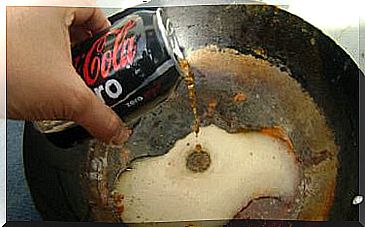Urine Culture: What Is It And What Is It Used For?

Urinary tract infections are very common. Scientific studies estimate that between 50% and 60% of women will get one in their lifetime. Many bacteria can cause it. Fortunately, a urine culture can detect the exact causative pathogen.
Of course, it is important to know how to identify the pathogen that caused the infection, as it allows the patient to recover quickly.
What is a urine culture used for?
First, we must emphasize that a urine culture and a urine sample are not the same thing. The latter consists of a series of tests, including macroscopic and microscopic tests, physico-chemical tests, and if necessary a urine culture.
Therefore, not all urine samples require urine culture for diagnostic purposes. According to the National Library of Medicine in the United States, medical professionals evaluate them when they suspect urinary tract infection in adults and children.
How is the sample taken?
In most cases, the patient takes the urine sample at home and then takes it to the doctor’s office. The Clinical Microbiology Committee of the Chilean Society of Infectious Diseases stated each step in a scientific paper.

How to collect the sample
This is a crucial phase in the process, as the fluid can become contaminated with bacterial skin commensals and commensals from the patient’s genitals. According to the American Society for Microbiology , any sample less than 5% contaminated is considered valid.
There are several types of sample collection, but we will focus on the most common. This is when the patient urinates in a container at home and then takes the sample to a health center. You should consider the following guidelines for this procedure:
- Collect your first morning urine as it is the most concentrated.
- Do not drink too much fluid before collecting the sample, as this will dilute the urine.
- Experts recommend collecting from 25 to 50 ml. Urine culture needs at least three milliliters.
According to the Annals of Pediatrics , the sample can also be obtained using other techniques, such as suprapubic aspiration or catheterization of the bladder. Although they are more aseptic than urination, they are also much more invasive procedures that professionals only use in exceptional cases.
What happens to a urine culture?
According to the medical tests we mentioned above, several analyzes of a urine culture are performed. The most common is bacterial growth. We tell you all about it below:
- The urine sample is spread on a medium that contributes to bacterial growth, which usually consists of a mixture of nutrient agar as a base in a petri dish.
- The professional incubates the urine sample for 16 or 18 hours at 35-37 ° C.
- Once incubated, health personnel count the bacterial colonies that grew in the petri dish.
The premise is simple. If bacteria are present in the patient’s urine, they will multiply in the urine culture. This allows medical professionals to know if the patient has an infection or not. Upon further testing, or if it is the specific medium for that pathogen, they will find the exact pathogen that is causing the infection.
Symptoms of urinary tract infection
It can be difficult to know if you need a urine culture to resolve your discomfort. Here are the most common symptoms of a urinary tract infection:
- A strong, persistent urge to urinate.
- A burning sensation when urinating.
- Urine that looks red, light pink or cola is a sign of blood in the urine.
- Pelvic pain in women, especially in the middle of the pelvis and around the area of the pubic bone.
The symptoms will vary depending on which part of the urinary tract the bacterial colonies infected. Nevertheless, the presence of the symptoms we have already described, as well as fever and stomach discomfort, are very common.
Results of a urine culture
The results of the test are easy to interpret. Normal values mean that everything is in order, and thus exclude a bacterial infection in the patient. On the other hand, a positive test result implies the presence of bacteria or fungi in part of the urinary tract.
In these situations , the doctor in charge of your case will prescribe the right antibiotic or antifungal agent. Remember to follow your doctors’ recommendations carefully, as stopping treatment early can lead to complications.

Urine culture during pregnancy: Is it important?
According to the website of the non-profit organization Inatal , a urine culture during pregnancy is very important. Pregnant women are more prone to bacterial infections due to the physiological changes that occur during pregnancy.
Furthermore, many are asymptomatic. Although a urinary tract infection does not cause clinical signs in the mother, it can lead to unwanted complications, such as an increased risk of preterm birth.
The importance of urine culture
As you may have seen, urine culture is an important part of a urine sample, when a medical professional suspects an infection in a patient. This simple laboratory technique allows researchers to isolate and identify the pathogen in each case.
Patients can easily take the sample at home. However, some exceptional cases require suprapubic aspiration and catheters. A negative urine culture indicates the absence of bacteria in the urinary tract, while a positive culture requires the use of antibiotics or fungicides.









